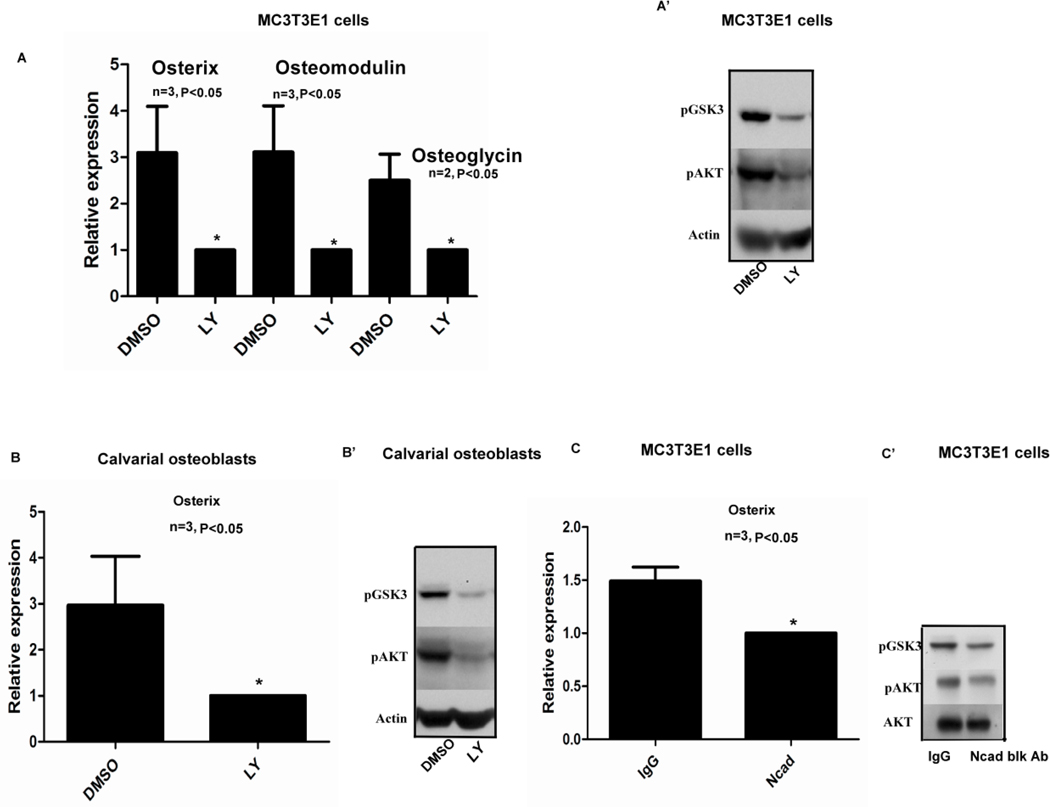FIG. 4.
A, A’) Treatment of MC3T3E1 cells with a PI3K inhibitor LY294002 (20µM) decreased Osterix Osteomodulin and Osteoglycin gene expression. Additionally, there was a decrease in pAKT and pGSK3 levels at high density. Fig. 4B, B’) Confluent primary calvarial osteoblasts when assayed for Osterix gene expression using real time PCR after treatment with LY294002 (50µM) showed a suppression of Osterix expression when compared to the DMSO treated sample. There was also a suppression of pAKT and pGSK3 levels when the cells were plated at high density and treated with LY294002. Fig. 4C,C’) Treatment of confluent (high density) MC3T3E1 cells with 130µg of N-cadherin blocking antibody showed a slight but significant decrease in Osterix gene expression levels using real time PCR. (n=3, p<0.05, all error bars indicate SD). There was also reduced phospho AKT and GSK3 levels in the N-cadherin blocking antibody (70µg) treated samples compared to the IgG treated controls. Western blot images are representative of two different experiments.

